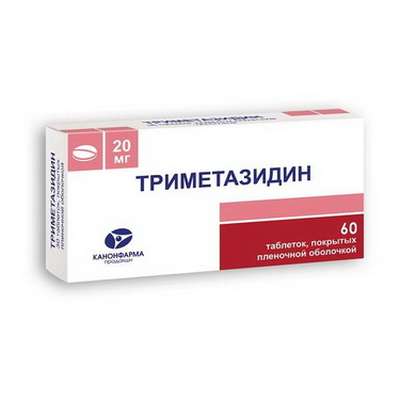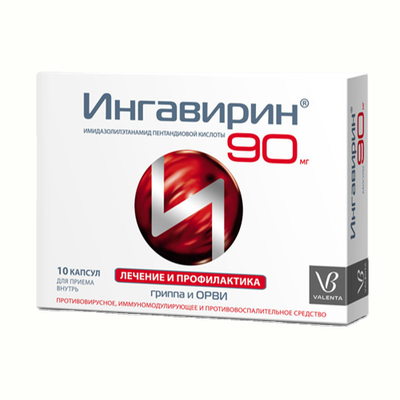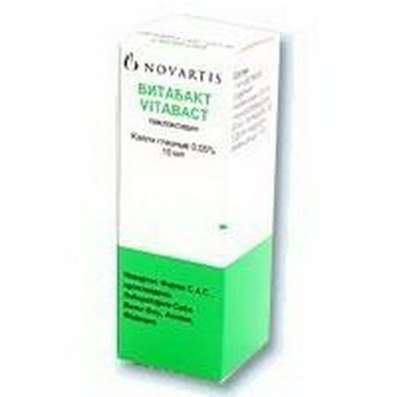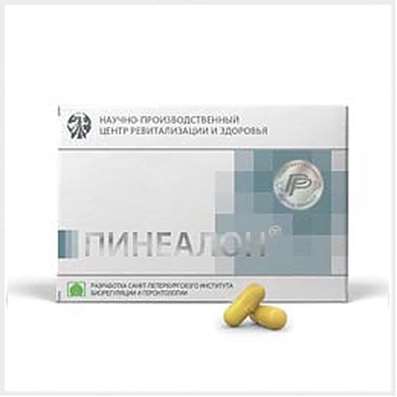Instruction for use: Gentamicin + Dexpanthenol + Mometasone + Econazole (Gentamicinum+Dexpanthenolum+Mometasonum+Econazolum)
I want this, give me price
Pharmacological group
Glucocorticosteroids in combinations
Nosological classification (ICD-10)
B35 Dermatophytosis
Lishay Grubi-Saburo, Lichen microsporic, Ringworm, fine-spore, Microsporosis, Dermatomycosis of the groin area and smooth skin, Mycosis of the skin and nails, caused by Trychophyton, Microsporia, Ringworm, Trichophytia, Epidermophytia
B35.4 Mycosis of the trunk
Dermatomycosis of the trunk, Dermatomycosis of the trunk, Skin mycosis, Mycosis of the smooth skin of the trunk, Microsporia of smooth skin, Rough smooth skin smoothing, Dermatophytosis of the trunk
B35.6 The inguinal epidermophytosis
Fungal lesions of skin folds, Dermatomycosis of the groin area and smooth skin, Mycosis of the inguinal region, Inguinal dermatophytosis, Inguinal epidermophytosis, Inguinal dermatomycosis, Mycosis of feet and large folds
B36.0 Multicolored lichen
Lichen otripeda, Leesar multicolored, Lichen pityriasis furfuracea, Pitirosporum orbiculare, Multicolored lichen, Peregrine lichen
B36.9 Surface muriculation, unspecified
Fungal diseases of smooth skin, Fungal diseases of the skin, Fungal lesions of smooth skin of the body, Dermatomycosis, Dermatomycosis in large folds of the skin, Dermatomycosis of smooth skin, Dermatomycosis, Dermatomycosis smooth skin, Interdigital fungal erosion, Mycosis of the skin of the body, Mycosis complicated by secondary pyoderma, Chronic fungal infections, Epidermophytia of smooth skin
B37 Candidiasis
Visceral candidiasis, Invasive Candidiasis, Candidiasis of the larynx, Candidiasis of the digestive tract, Candidiasis of the skin and mucous membranes, Candidiasis of mucous membranes and skin, Candidiasis of the mucous membranes, Candidiasis caused by Candida albicans,Candidomycosis,Acute pseudomembranous candidiasis, Chronic forms of candidiasis
B37.2 Skin and Nail Candidiasis
Fungal paronychia, Fungal Eczema, Fungal dermatosis, Fungal diseases of smooth skin, Fungal lesions of smooth skin, Fungal lesions of smooth skin of the body, Fungal nail infections, Yeast Infection of the Skin, Candidiasis of the skin, Candidiasis of skin and mucous membranes of mouth and mouth, Candidiasis of the skin of nail ridges, Candidiasis of nail rollers, Candidiasis of nails, Candidiasis with lesions of the skin and mucous membranes, Candidiasis of mucous membranes and skin, Candida paronychia, Candidomycosis of the skin, Cutaneous candidal infections, Cutaneous candidiasis, Interdigital fungal erosion, Mycotic dermatitis, Paronychia candida, Superficial form of skin candidiasis, Superficial candidiasis, Superficial candidiasis of nails, Superficial mycosis of the skin, Chronic candidiasis of the skin
B49 Mycosis, unspecified
Common mycoses, Visceral mycosis, Deep endemic mycoses, Keratomycosis, Cutaneous mycosis, Pulmonary mycosis, Mycosis, Mycosis eyes, Mycoses of the gastrointestinal tract, Mycosis of large skin folds, Mycosis with secondary bacterial infection, Mycoses in patients with immunodeficiency, Systemic fungal infections, Tropical mycoses, Fungal infections of the skin, Fungal lesions of skin folds, Fungal infection, Fungal skin lesions, Fungal lesions of the bronchial mucosa, Fungal lesions of the oral mucosa, Infections fungal, Infections of skin fungal, Skin mycoses, Mycosis systemic, Mycosis of the mucous membranes
L20 Atopic dermatitis
Itchy atopic eczema, Common neurodermatitis, Allergic skin diseases, Allergic skin diseases of non-infectious etiology, Allergic skin diseases of non-microbial etiology, Allergic skin diseases, Allergic skin lesions, Allergic manifestations on the skin, Allergic dermatitis, Allergic diathesis, Allergic itching dermatosis, Allergic Skin Disease, Allergic skin irritation, Dermatitis allergic, Atopic dermatitis, Dermatosis allergic, Diathesis exudative, Skin Allergic Disease, Skin allergic reaction to medicinal and chemical preparations, Skin reaction to medication, Skin and allergic disease, Acute eczema, Chronic atopic dermatitis, Exudative diathesis, Itching allergic dermatosis
L20.8 Other atopic dermatitis
Constitutional neurodermatitis, Chronic neurodermatitis, Restricted neurodermatitis, Allergic eczema, Atopic eczema, Children's eczema, Diffuse neurodermatitis, Neurodermatitis, Neurodermatitis diffuse, Neurodermatitis limited, Neurodermatitis, Dermatosis of a neurogenic origin
L28.0 Simple chronic lichen
Common lichen, Chronic and simple lichen, Chronic lichen
L30.3 Infectious dermatitis
Microbial skin infections, Dermatitis with concomitant bacterial infections, Dermatitis in the presence of a bacterial infection or suspected of it, Infected eczema of external auditory canal, Secondarily infected dermatosis, Erythema migrans, Secondarily infected dermatoses , Dermatitis re-infected, Infectious dermatitis, Dermatitis infected, Dermatoses complicated by a secondary infection, Dermatoses complicated by primary and secondary infection, Dermatoses complicated by primary and / or secondary infection, Infected eczema, Infected dermatitis, Infected dermatosis, Migrating erythema, Microbial eczema, Chronic migratory erythema, Eczema is infected, Erythema Migrating, Bacterial dermatitis, Erythema migratory chronic, Superinfectant dermatitis, Necrolytic Migrating erythema
L30.9 Dermatitis, unspecified
Allergic dermatoses complicated by a secondary bacterial infection, Anal eczema, Bacterial maturation, Varicose Eczema, Venous dermatitis, Inflammation of the skin, Inflammation of the skin upon contact with plants, Inflammatory Skin Diseases, Inflammatory skin reactions, Inflammatory processes of the skin, Hypostatic dermatitis, Fungal Eczema, Fungal dermatosis, Dermatitis, Dermatitis is stagnant, Dermatitis and eczema in the anal area, Dermatitis acute contact, Perianal dermatitis, Dermatosis, Dermatosis of the scalp, Dermatosis of psoriasis, Dermatosis with persistent itching, Dermatoses, Dermatoses itchy, Other itching dermatoses, Significant eczematous manifestations, Itching with, dermatoses, Itching eczema, True eczema, Skin reaction to insect bites,Skin itching with dermatosis, Constitutional eczema, Weeping eczema, Drowsing inflammatory skin disease, Dying Infectious-Inflammatory Skin Disease, Non-allergic dermatitis, Nummular eczema, Acute contact eczema, Acute inflammatory skin disease, Acute dermatosis, Acute severe dermatosis, Perianal dermatitis, Superficial dermatosis, Subacute Contact Eczema, Simple dermatitis, Occupational dermatitis, Psychogenic dermatosis, Bubble dermatitis of newborns, Pustular eruptions, Irritation and redness of the skin, Low-flammable eczema, Dry atrophic eczema, Dry eczema, Toxic dermatitis, Ear eczema like dermatitis, Chronic eczema, Chronic dermatosis, Chronic common dermatosis, Scaly papular dermatosis, Eczema, Eczema anal region, Eczema of the hands, Eczema Contact, Eczema lichenized, Eczema Nummular, Eczema acute, Eczema acute contact, Eczema subacute, Eczematous dermatitis, Eczema-like rashes, Ecome exogenous, Endogenous eczema, Gluteal dermatitis, Restricted itchy dermatitis
Characteristics
Combination, which includes gentamicin (antibiotic aminoglycoside), dexpanthenol (tissue repair stimulant), mometasone (glucocorticosteroids) and econazole (antifungal agent).
Pharmacology
Pharmacological action - wound-healing, anti-inflammatory local, antifungal local, antibacterial local, glucocorticoid (local).
Pharmacodynamics
It has anti-inflammatory, antipruritic, anti-exudative, antibacterial, antifungal (fungicidal) and regenerative action. The activity of the agent is due to the pharmacological properties of the components that make up its composition.
Gentamicin is a broad-spectrum antibiotic from the aminoglycoside group. It is bactericidal and provides highly effective local treatment of primary and secondary bacterial skin infections. It is active against gram-negative microorganisms: Pseudomonas aeruginosa, Aerobacter aerogenes, Escherichia coli, Proteus vulgaris, Klebsiella pneumoniae; Gram-positive microorganisms: Staphylococcus aureus (coagulase-positive, coagulase negative and some strains producing penicillinase).
Dexpanthenol is a derivative of pantothenic acid. Pantothenic acid - a water-soluble vitamin B (vitamin B5) - is an integral part of coenzyme A. Stimulates skin regeneration, normalizes cellular metabolism, accelerates mitosis and increases the strength of collagen fibers. Penetrates into all layers of the skin. It has a regenerating, weak anti-inflammatory effect.
Mometasone - a synthetic SCS, has a local anti-inflammatory, antipruritic and antiexudative action. SCS induces the release of proteins that inhibit phospholipase A2 and are known collectively as lipocortins that control the biosynthesis of inflammatory mediators such as PG and LT by inhibiting the release of their common precursor, arachidonic acid.
Econazole is a synthetic derivative of imidazole. Has antifungal and antibacterial action. It inhibits the biosynthesis of ergosterol, which regulates the permeability of the cell wall of microorganisms. It dissolves easily in lipids and penetrates well into tissues. It is active against dermatophytes Trichophyton, Microsporum, Epidermophyton, yeast-like fungi of the genus Candida, Corynebacterium minutissimum, and also Malassezia furfur (Pityrosporum orbiculare), which causes pungent lichen, and some gram-positive bacteria (streptococci, staphylococci).
Pharmacokinetics
Gentamicin. When topical application is absorbed in small amounts. Due to its low absorption, it practically does not have systemic effects.
Dexpanthenol. When applied externally, it is absorbed and converted to pantothenic acid, binds to blood plasma proteins. Pantothenic acid is not metabolized in the body and is excreted unchanged by the kidneys.
Mometasone. Absorption of mometasone for external use is low. After 8 hours after a single application on intact skin (without occlusive dressing), about 0.4% of the dose is found in the systemic blood stream. With inflammation and damage to the skin, absorption increases. Mometasone is extensively metabolized in the liver. It is excreted mainly by the kidneys and in a small amount - with bile.
Econazole. With topical application, econazole penetrates into all layers of the skin and the nail plate. Therapeutic concentrations are created in the horny and other layers of the epidermis, as well as in the dermis. When applied to the skin, systemic absorption is negligible. Less than 1% of the applied dose is excreted through the intestines and kidneys.
Application of Gentamicin + Dexpanthenol + mometasone + Econazole
Dermatoses of inflammatory genesis with concomitant bacterial and mycotic infection or a high probability of secondary infection (simple and allergic dermatitis, atopic dermatitis, including diffuse neurodermatitis, limited neurodermatitis, eczema, dermatomycosis (dermatophytosis, candidiasis, multicolored lichen), especially when localized In the groin and large folds of the skin, simple chronic lichen (limited neurodermatitis).
Contraindications
Hypersensitivity to dexpanthenol, econazole, gentamicin, mometasone; Cutaneous post-vaccination reactions; lupus; Cutaneous manifestations of syphilis; chickenpox; Herpes simplex; Application in the field of open wounds; Rosacea; Perioral dermatitis; Period of lactation; Age to 18 years (efficiency and safety not established).
Restrictions for use
Application on large areas of skin; Long-term use; Application in violation of the integrity of the skin; Application of occlusive dressings; pregnancy.
pregnancy and lactation
Controlled studies of the use of a combined agent in pregnancy have not been conducted. Use in pregnancy is possible only in cases where the intended benefit to the mother exceeds the potential risk to the fetus. During pregnancy, do not use this product on large areas of the skin or for a long period of time.
GCS is excreted in breast milk. In this regard, during lactation, breastfeeding of the child or the use of the combined remedy by the mother should be stopped.
Side effects
Classification of the incidence of side effects as recommended by WHO: very often (≥1 / 10); Often (≥1 / 100, <1/10); Infrequently (≥1 / 1000, <1/100); Rarely (≥1 / 10000, <1/1000); Very rarely (<1/10000), including individual messages; The frequency is unknown (it is not possible to establish the frequency of occurrence from the available data).
On the part of the skin: rarely - skin irritation, dry skin, burning sensation, itching, acne, skin atrophy (thinning and loss of elasticity), hypertrichosis (excessive hair growth), hypopigmentation, perioral dermatitis (rash or irritation around the mouth), Allergic contact dermatitis, maceration of the skin (softening of the upper layers of the skin), striae (stretch marks), sweating (skin irritation, which develops due to increased sweating), papules and / or pustules (rash); Frequency is unknown - skin hyperemia (redness), urticaria (the appearance of blisters).
From the side of the nervous system: the frequency is unknown - paresthesia (sensation of tingling and numbness).
Other: rarely - folliculitis (inflammation of the hair follicle), secondary infection.
With local application of GCS for a long time and / or in large areas of the skin, or with the use of occlusive dressings, there may be side effects that are characteristic of SCS of systemic action, including adrenal insufficiency and Itenko-Cushing syndrome.
Interaction
Studies of the interaction of the combination with other drugs have not been conducted, but it is not recommended to be used simultaneously with other agents for external use.
Overdose
Symptoms: with prolonged local application of GCS in high doses, it is possible to suppress adrenal function with the development of secondary adrenal insufficiency and symptoms of hypercorticism, including Itenko-Cushing syndrome.
A single overdose of gentamicin is not accompanied by the appearance of any symptoms. Long-term use or use in doses exceeding recommended, can lead to a significant increase in insensitive microflora, incl. Fungal, in the lesion.
Overdosage of econazole with topical application does not lead to any symptoms.
In case of an overdose of dexpanthenol, no local symptoms are expected in the local application.
Treatment: symptomatic. Acute symptoms of hypercorticism are usually reversible. If necessary, correction of electrolyte imbalance is shown.
With uncontrolled growth of insensitive microorganisms or the development of fungal infection, treatment should be discontinued and appropriate therapy selected.
Routes of administration
Locally.
Precautions for Gentamicin + Dexpanthenol + mometasone + Econazole
The combination is not intended for use in ophthalmology. Do not let it get into the eyes and periorbital area.
It is not recommended to apply the combination to the face and scalp. It is not recommended to apply it for occlusive dressings, except when necessary.
It should not be used to treat varicose trophic ulcers of the lower leg and open wounds. Some areas of the body (inguinal folds, axillary hollows and perianal region) are more susceptible to the risk of streaking, so the duration of application of the combination in these areas of the body should be limited.
If a combination of irritation or signs of hypersensitivity occurs, treatment should be discontinued and another therapy should be selected for the patient.
Any side effects that occur when using systemic GCS, including suppression of adrenal cortex function, can be noted even with external application of GCS. Systemic absorption of local GCS may increase with prolonged use, treatment of extensive body surfaces or the use of occlusive dressings. In such cases, the development of side effects, characteristic of systemic SCS, is possible.
It should be borne in mind that the GCS is able to change the manifestations of certain skin diseases, which can make it difficult to diagnose. In addition, the use of GCS may be a cause of delayed wound healing.
With prolonged therapy with SCS, sudden discontinuation of therapy can lead to the development of a rebound syndrome, manifested in the form of dermatitis with intense reddening of the skin and a burning sensation. Therefore, after a long course of treatment, the combination should be canceled gradually.
Systemic absorption of gentamicin for external application may increase in case of application to large areas of the skin, especially with prolonged treatment or if there are skin lesions. With long-term use of the combination on extensive skin surfaces with compromised integrity, there is the potential for absorption of gentamicin and the development of symptoms of ototoxicity and other undesirable phenomena characteristic of gentamicin in its systemic application.
It is possible to develop cross-allergic reactions to antibiotics from the aminoglycoside group.
With prolonged local application of gentamycin, growth of insensitive microflora, including fungal growth, can be observed. In this case, as with the development of irritation, reactions of hypersensitivity and superinfection, treatment should be stopped and appropriate therapy prescribed.
Impact on the ability to drive vehicles and mechanisms. Data on the negative impact of the combined drug on the ability to drive vehicles and mechanisms, as well as other activities that require concentration and speed of psychomotor reactions, are absent.

 Cart
Cart





